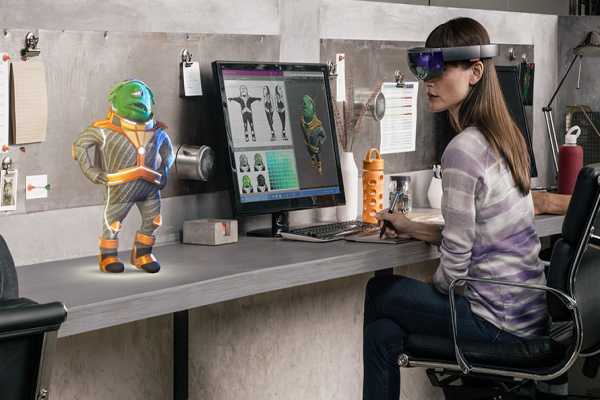Published on the 15/02/2017 | Written by Anthony Caruana

Empired using HoloLens with mining, manufacturing and architecture clients…
Microsoft’s HoloLens is self-contained holographic computer that puts digital content right in front of you. Rather than limiting things to the 2D view we get from out computer screen, the headset puts 3D images right in front of your eyes.
Travis Wu, a vice president for research from Forrester, said “Unlike Augmented Reality, which is lightweight but has limited views and functionality, or Virtual Reality, which is very powerful but comes with bulkiness and dependence on a PC, Mixed Reality blends holograms with the real world to marry agility and powerfulness. HoloLens brings this concept to life, it is light enough for users to move around safely, and it is very powerful because it is a self-contained computer that doesn’t require tethering to another PC.”
It’s this promise that has tech companies scrambling to find problems for the solution.
Stuart Strickland, Western Australia GM at Empired, described HoloLens as ‘emerging or disruptive technology’. “It lets people work, collaborate and communicate in entirely new ways [and can] help businesses innovate and compete in ways they haven’t been able to consider in the past.”
Unlike virtual reality, which places an artificially constructed environment in front of the user, mixed reality overlays programmatically created objects over the real world. For example, for a mechanic, it could overlay visual cues for carrying out a repair or maintenance function over a defective piece of equipment.
Strickland used the example of mining. “In the past, a mining company would have to build a 3D data cave to visualise mine designs to look for improvements. The cave would cost more than $1 million to build, before incorporating any of the other costs. By contrast, the HoloLens costs just a few thousand dollars. This lets companies move faster, making smarter decisions based on real-life scenarios without investing so significantly in the research and design process.”
The process for adding content into a HoloLens device is straightforward said Strickland. A CAD drawing can be loaded straight, manipulated and improved.
Other applications include education, with teachers and trainers able to appear virtually on site in front of students from anywhere with an internet connection – dependent, of course, on robust broadband connectivity.
Gartner analyst Brian Blau said Microsoft’s strong market presence, driven by its business software, does give it an advantage. The local price tag of $4,369 for the Development Edition, is suited to individual developers, or $7,269 for the enterprise-focused Commercial Suite is not a huge cost, giving businesses an opportunity to dabble in this leading-edge tech without breaking the bank.



























